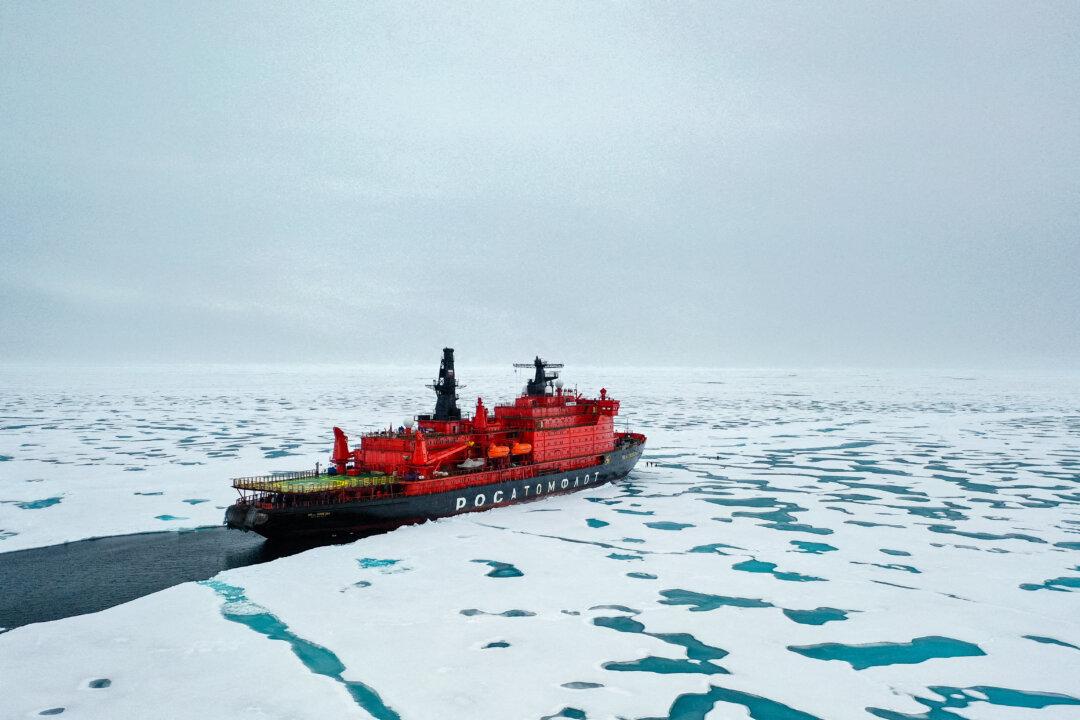ARLINGTON, Va.—Pentagon leadership is unveiling its latest strategy for the Arctic region as competition for geopolitical advantage heats up with China and Russia.
The strategy takes aim at the increasing militarization of the region by Beijing and Moscow amid an expanding race for natural resources.
“The Arctic is strategically vital to U.S. security,” Deputy Secretary of Defense Kathleen Hicks told reporters during a July 22 briefing.
Ms. Hicks added that it’s imperative to national security that the United States ensure the Arctic “remains a secure and stable region” in the face of increasing aggression by the Chinese regime and Russia throughout the world.
The strategy directs the U.S. military to adopt a “monitor and respond approach” while “exercising [a] calibrated presence” in the region by coordinating with Arctic allies on issues pertaining to strategy, training, and equipment.
Ms. Hicks described the strategy as part of a “whole of government” effort to round out U.S. deterrence and readiness in the Arctic through regular training and exercises with allies, as well as investments in new systems, space capabilities, and cold weather gear.
Among the efforts outlined is a directive to modernize the North American Aerospace Defense Command, through which the United States and Canada respond to emergent threats in North American airspace.
The Chinese regime has more than doubled its investment into Arctic projects since then and is focused on pursuing mineral extraction and scientific engagements, which could help to improve its military capabilities.
China also is attempting to build out a new economic corridor through the region. The so-called Polar Silk Road would link Asia and Europe by traversing the opening waterways of the Arctic along Russia’s northern coast rather than going through the more densely patrolled Indo-Pacific.
The subsequent flow of commercial, scientific, and military vessels into the region has increased, altering a geographic and strategic reality that had long seen little disturbance.
“We’ve seen an uptick in their [China and Russia’s] cooperation over the last several years,” Deputy Secretary of Defense for Arctic and Global Resilience Iris Ferguson said.
“We’ve also seen military exercises ... off the coast of Alaska.”

Ms. Hicks described China and Russia’s continued strategic cooperation as “concerning” and said it’s likely China’s scientific research in the Arctic would have military applications.
“We always have concerns that there’s a military aspect to that,” she said.
“It is imperative that the joint force is equipped and trained with what they need to succeed in the Arctic.”
As such, Ms. Hicks said that the United States is investing in cold weather equipment just as it had previously invested in specialized gear for deployments in the Middle East.
Foremost among those investments is the development and deployment of polar icebreaker ships, which are required to break through the softening ice of Arctic trade routes in the summer months.
At present, the United States has just two diesel icebreakers, both of which are nearing the end of their life. Likewise, U.S. ally Finland maintains 12, and Canada maintains nine.
Russia, meanwhile, boasts some 30 diesel-powered and seven nuclear-powered icebreakers.
The Icebreaker Collaboration Effort (ICE Pact) will facilitate collaboration in producing polar icebreakers and enhance information sharing on related issues. It also will allow workers and experts from each country to train in shipyards across all three.
Ms. Hicks described the ICE Pact as “yet another example of the type of cooperation that we can leverage.”
“It’s about making sure we’re ready to execute missions there,” she said.
Likewise, Ms. Ferguson said, “This is the type of cooperation we should be leaning into more.”







